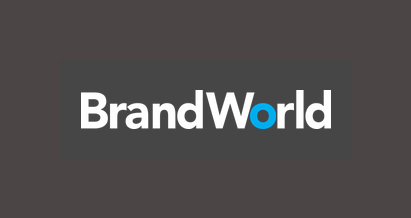BrandWorld would like an opportunity to respond to some of Clinton Beuvink’s claims in this month’s issue of FMCG Business [April 2015 issue, pg 36-37].
While we agreed with his assertions that there is not enough focus on “that dreaded ‘C’ word: CONSUMER”, too much on POS, which (we also agree) is heavily driven by price promotions, and that digital is way over sold and not working for most brands, it’s his way of reaching, talking and connecting with consumers before they get to the supermarket that we somewhat disagree with. Specifically it’s his assertion that TV is not affordable or working.
What do we mean by television?
Today in a digitally disrupted world every industry is in transition. The world of television of just five years ago verses today, versus five years from today, is completely different.
In New Zealand the broadcast model of video is in rapid flux. More traditional Free-to-Air (FTA) models are becoming interactive with On Demand and social amplifiers like Facebook and Twitter as part of their programmes and advertising, while social channels like YouTube and Facebook are acting more like broadcasters and becoming content creators. And in between there are now a myriad of new broadcasting models like Netflix and marketing-owned channels like Red Bull.
To this end we’d like to make the following points, some of which we made in a recent and well received speech at the Content Marketing Conference in Auckland:
1) We agree it’s not about television any more, it’s about video. Video is the gold standard for engagement. Research shows that consumers overwhelmingly want to view videos. So for marketers it’s the most important trigger to create sales and customer loyalty; so it’s not about television, it’s about creating good visual content that connects with consumers and can be repurposed for a variety of different distribution methods, including television, online and mobile. (Please see the attached infographic we produced for one of our presentations for more stats.)
2) If you look at content as a whole and do not define it by individual distribution methods you can see how cost effective it can be to make good video content that is effective across the medium spectrum – BrandWorld specialises in this and we employ programme makers and editors who know all too well how to produce effective video content, that really connects with consumers at an affordable price
3) Television rather than being on the way out remains and will remain for some time (in New Zealand at least) the strongest and most cost effective distribution method for video by far:
– Kiwi’s still watch 3 hours and 28 minutes of television a day, You Tube is 9 minutes
– 72% of Kiwis watch television every day
– The average click through rates for online ads is still just 0.1% – when was less than 1% a good delivery of anything!
– Television in New Zealand is 40% to 50% on a cost-per-tarp basis cheaper than Australia and other markets
4) This is a reality check on the blindness that is accompanying the digital evangelism and self-interest of people trying to drive digital faster than consumers are actually adopting it. We’ve been told for years that newspapers would die in 2000 with the internet, that no one would listen to radio when they got television and that mainstream TV would die when Sky came along: a lot of broken promises, failed philosophers and so the trail continues
5) If you look at consumers today not a lot has changed – time poor, need advice, need curation and they still like stories; good stories that resonate with them, that engage them both rationally and emotionally, yet too many campaigns still just shout at them regardless of the medium/distribution method they use.
6) Worse, some marketers and communication strategists still think their consumers are just like them. But Ponsonby is not Putararu; the vast majority of consumers simply aren’t as far advanced in media consumption, gadgets or time spent online as the people trying to sell stuff to them are! Colmar Brunton did a great piece of research in 2014 showing this gap.
7) Baby boomers are the rich vein now. Twenty to 35 year olds are the future, but we are in 2014 not 2020, so the target with money are not your children or their friends or even those under 35 (got kids, big mortgage, student loans – get real!). The 35+ is a more important target and they are more traditional media consumers
8) Marketers must think about reach. You need numbers to justify investment. There are simply too many “art projects” being sold to clients because it is a cool brand element, but they are designed more for looking good rather than for actually selling products
9) Then marketers need to think about their consumers’ pathway to purchase, apertures of receptivity – talking to them about stuff they want to hear about, when they want to hear about it
Most importantly, we need to get away from the old definition of television. Television is really just the curation and distribution of audio-visual content – yes, TV is free-to-air (FTA), but it’s also Sky; it’s on-demand; it’s Netflix; it’s You Tube; it’s media-owned websites like Mind Food; and it’s even client-owned websites like drinks company Lion’s The Mix, Mitre 10’s Easy As series or Wattie’s Food in a Minute (FIAM).
When you can make effective video content that can be used across all those screens, it’s not just very cost effective, it can be incredibly powerful. Think FIAM, The Mix, Made to Match (all BrandWorld’s).
So can we please stop talking about television as if it’s dead. It’s alive and well; consumers still love it and digital is just adding to the passion.
All the best.
Mike O’Sullivan and John Macdonald, BrandWorld
*Disclaimer of interest: BrandWorld makes a lot of cost effective and effective video content, especially for television!




